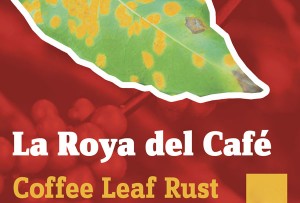 The government of the U.S. has stepped up its efforts to help farmers in Central America fight a devastating disease that is hitting coffee to hold the price of the morning cup down before it become too expensive.
The government of the U.S. has stepped up its efforts to help farmers in Central America fight a devastating disease that is hitting coffee to hold the price of the morning cup down before it become too expensive.
The disease is a fungus known as coffee rust that has caused over $1 billion in damage throughout Latin America. The fungus has devastated Arabica coffee, the bean that is responsible for the majority of the specialty, high-end coffees.
The fungus has already started to affect the price of some the pricier coffees available in the U.S. Raj Shah, the U.S. Agency for International Development director said the U.S. is concerned because they are aware how coffee rust has already caused huge areas of devastation.
However, the government is not only doing this to protect the specialty coffee. The biggest concern is about the economic future of the small farms in the Latin American region.
If farmers do not have coffee, they cannot employ locals, which will increase the poverty and hunger across the region, that in turn will contribute to drug trafficking and violence.
Washington has estimated that coffee production will fall by 15% to 40% over the next few years, which could turn into the loss of work for as many as 500,000 people.
Some countries have been able to bring the coffee rust fungus under control, but other countries that produce coffee in the region that are poorer do not see the fungus problem getting better soon.
Panama, Costa Rica, Honduras, El Salvador and Guatemala have been hit hard with the fungus.
A great deal of the mass-produced, blander coffee in the U.S. arrives from Asia and other far east regions. Most of the more expensive, richer coffees are from the high altitude, small farms across Central America.
Since the farms usually are smaller, farmers often times do not have sufficient money to purchase fungicides they need or do not have the training to plant in a way that might avoid contamination.
The fungus or rust is known as roya in Spanish. It is very contagious because of airborne spores and worsens when the rainy season arrives.
